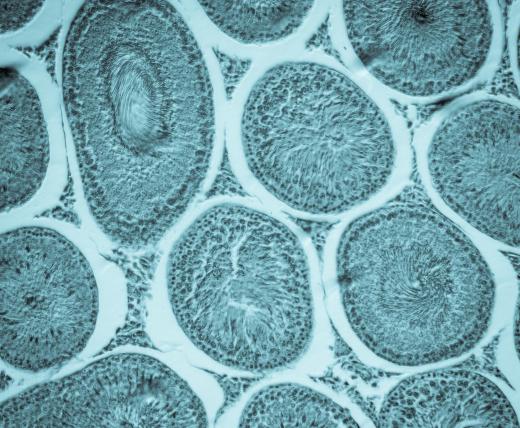What Is the Structure of a Bacterial Cell?
Bacteria are single-celled organisms that have a prokaryotic cell structure. While bacterial cells vary in some structural elements, such as size and shape, they all share the common traits of prokaryotes. Prokaryotic cells are distinctive in that they do not have nuclei or other organelles bound by membranes.
The bacterial cell is protected and contained by a cell wall, which is made from peptidoglycan, a sugar and protein polymer. Bacteria with thick cell walls are referred to as gram-positive, while those with thin cell walls surrounded by a lipid membrane are called gram-negative. The cell wall protects the cell from the effects of turgor pressure, which results from the higher concentration of solute inside the cell compared to the cell’s surrounding environment.

Some bacterial cells have external structures. Flagella, which are long, flexible structures made from the protein flagellin, extend out from the cell wall and give the bacterial cell added motility. Pili and fimbrae are short tubes of protein that are found among Proteobacteria and allow the bacterial cell to latch on to a substrate or another bacterial cell.

Separating the cytoplasm, or internal fluid of the cell, from the cell wall is the cell membrane. This membrane acts as a mediator in the transport of material into and out of the cell. The bacterial cell membrane is a phospholipid bilayer consisting of fatty acids and is permeable only to certain ions and molecules.
The interior of the bacterial cell is fairly simple, since prokaryotic cells do not contain many internal structures. The genetic information of a bacterial cell is encoded in a supercoiled structure of deoxyribonucleic acid (DNA) suspended in the region known as the nucleoid. The bacterial chromosome is usually circular in shape.
Other small pieces of DNA known as plasmids float independently in the cytoplasm apart from the main chromosome. These fragments code for nonessential traits and may be exchanged between bacteria. The lack of a membrane-bound nucleus allows the DNA in a bacterial cell to interact more directly with ribosomes, which are responsible for the process of translation, or the transfer of genetic data.
Ribosomes and the bacterial chromosome are the most basic intracellular structures found in the cytoplasm of a bacterial cell, although some types of bacteria include more complicated structures. For example, some types of bacterial plankton have gas vesicles in their cells, which allow them to adjust their buoyancy in water. Structural filaments comprising a cytoskeleton have also been observed in bacterial cells.
AS FEATURED ON:
AS FEATURED ON:












Discuss this Article
Post your comments